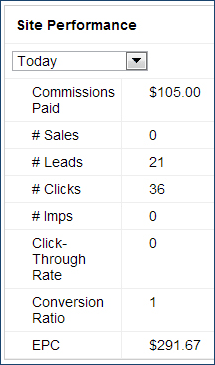Let me start by saying that Fiverr is a great platform used by multiple upright affiliate marketers on a multitude of reasons. Some are finding affordable help (copywriters, web designers, coders, video production services, etc), others are earning money with Fiverr’s own affiliate program, but the group to which I want to draw your attention today is “making money on Fiverr” in a very different way — one that all managers (and especially those who handle pay per lead affiliate programs) must be aware of.
These guys aren’t easy to spot on the sign-up/application level. They will not list “fiverr” in their URL or promotional methods, but will more than likely portray themselves as content or SEO marketers. Their profile may look like this (this is a screenshot of an actual rogue affiliate’s profile page):
Once accepted into your affiliate program, they will go to Fiverr, find a user who offers something similar to this (we’ve actually caught this particular Fiverr member being used in such a scheme by another affiliate fraudster):
…and in a matter of just a few days your “leads” count will soar! Let’s just zoom into the above-quoted affiliate’s statistics to highlight the red flags:
 Causes for Concern:
Causes for Concern:
Red Flag #1: Spike in referrals: from zero to hundreds of leads a week.
Red Flag #2: Conversion Rate: 21 * 100 ÷ 36 = 58.33%.
Red Flag #3: Inflated EPC: when we compare this affiliate’s average earnings per 100 clicks with the average EPC figure of the top 10 affiliates in the program, we see that it is some 10 times higher.
Note: The zero in the “click-through rate” row is not a red flag, as impressions (to which CTR calculation is tied) are not being registered when text links are being used.
Any time you see (i) a sharp increase in referrals, (ii) a conversion rate that exceeds your average 5 times or more, or (iii) an unusually high EPC, you want to take a close look into the “promotional methods” the affiliate is using.
In principle, the above-described scenario is no different than situations where affiliates incentivize their users to perform the action for which the affiliate receives compensation. Whether it is done via virtual currency, points, cash, prizes or any other incentive, if the advertiser’s desired action is motivated by something other than the genuine customer desire to try their product or service, it yields useless “leads.” In the situation outlined above, rogue affiliates are, basically, using someone else to assist them in the fraud. Beware of these situations, watch out for the red flags, and ensure you reverse any such “commissions” before they lock.


Great example, Geno.
It’s unfortunate that although this is easy to explain, understand, detect and reproduce as a human, detecting this kind of abuse in an automated fashion is very difficult.
Exactly, Wesley! It took us some collaborative effort with the client/merchant to spot these. Which, should I even mention it, took us a few days.
Yikes, thanks for the heads up. I just took over a leads based program, so I will be sure to add this to my list of potential fraudsters when I see those red flags 🙂
Yes, PPL programs can be fun, Trisha. Good luck managing yours.
Another red flag which didn’t make it into the original post is this particular affiliate’s “Network Earnings” ranking. 4 bars, yet “N/A” both for 7 days and for 3 months is a red flag.
Pingback: Marketing Day: January 10, 2014
Hi Geno,
Wow, it’s unbelievable to me how many crooks there are in the world. The only thing I can say, is that, it’s a good thing we have people like you to catch the dirty little thieves.
Thanks so much for this post and valuable information. It will help to catch a thief. 🙂
Geri Richmond
Hi Geno,
Very interesting…and a bit frightening. I’m sure there are probably many examples of how this can be done beyond Fivrr and certainly no reason to go into detail and give people out there more ideas. Thanks for sharing this post with the BizSugar community.
So just to make sure I understand – these are people that are paying other people, who offer gigs on fiverr, to fill out lead forms for them? It seems like all of the typical warning signs are present in the EPC and conversion rates.
Correct, Ryan. These affiliates are “hiring” Fiverr folks to put through fake leads for them. And yes, the CR and EPC are the red flags.